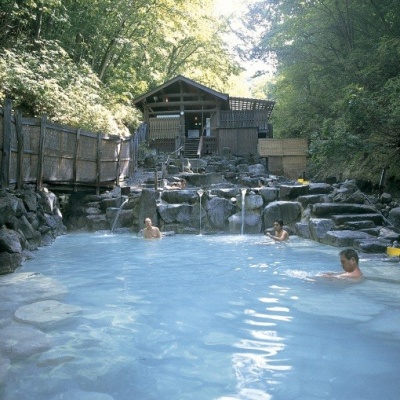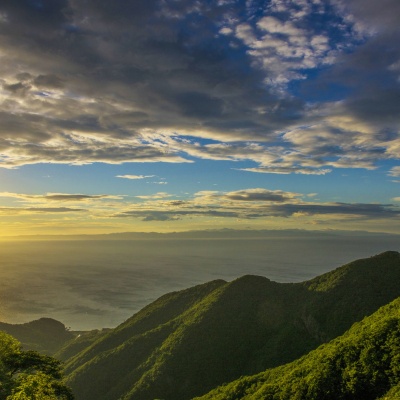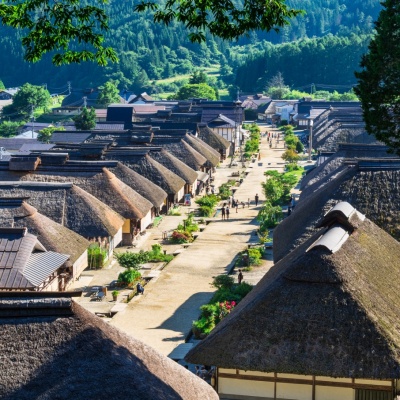3 days/2 nights based in Hanamaki Onsenkyo [Base! Tohoku]
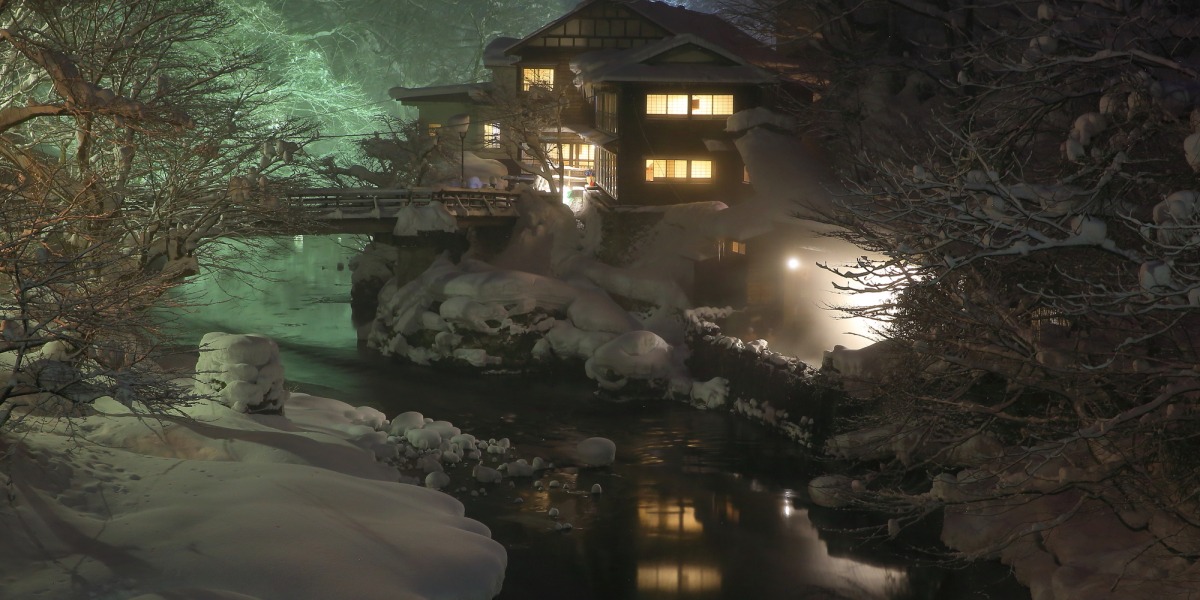
Kenji Miyazawa was a poet and writer of children's stories whose works were rooted in Buddhist beliefs and farmer's life.
His hometown is here in Hanamaki City.
Why not follow in the footsteps of Miyazawa's works?
START
Day1
HANAMAKI TOY MUSEUM
Enriching encounters and fun through toys and play
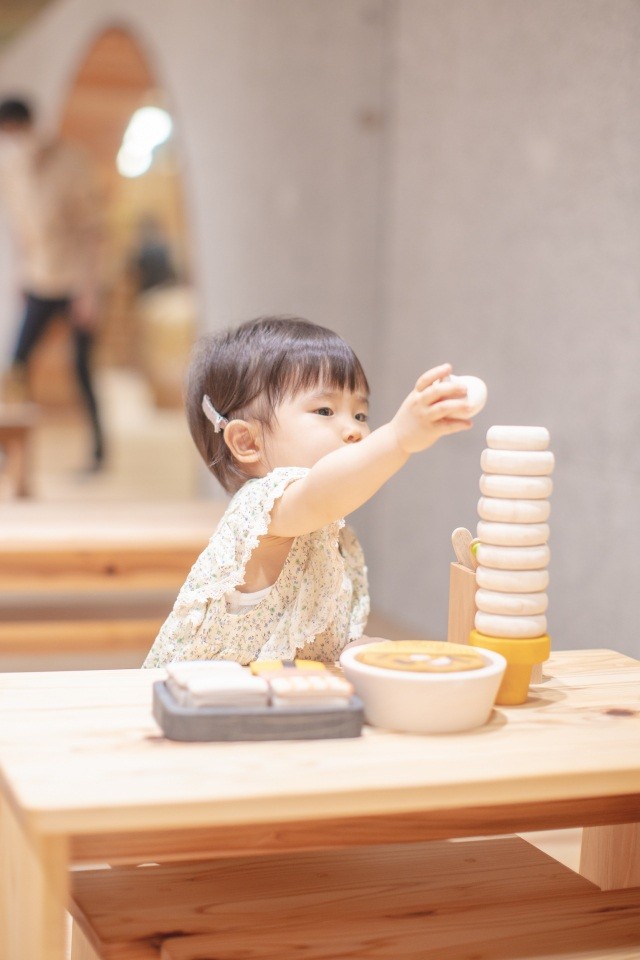
HANAMAKI TOY MUSEUM opened in July 2020 on the second floor of the Marukan Building, a local symbol that has made a miracle comeback from its closure. HANAMAKI TOY MUSEUM is built with lumber from the region and supported by local people. It is a place where everyone can enjoy multigenerational interactions through toys and play. Note: Due to the ongoing outbreak of the new coronavirus, restrictions on admission to the museum may be imposed.
Most of the wood used for the museum's interior, furniture, and toys is harvested in Hanamaki and Iwate Prefecture.The processing and construction of these materials is done by the Otomo Lumber Co., Ltd. and other craftsmen in the city and other parts of Iwate Prefecture.This place, created with local lumber and human resources, will not only serve as a "wood education space" for children to enjoy and learn about the appeal of wood, but also as an example of the use of local lumber as well as a place where citizens can enjoy new activities.
Most of the wood used for the museum's interior, furniture, and toys is harvested in Hanamaki and Iwate Prefecture.The processing and construction of these materials is done by the Otomo Lumber Co., Ltd. and other craftsmen in the city and other parts of Iwate Prefecture.This place, created with local lumber and human resources, will not only serve as a "wood education space" for children to enjoy and learn about the appeal of wood, but also as an example of the use of local lumber as well as a place where citizens can enjoy new activities.
Miyazawa Kenji Fairytale Village
Experience the fantasy world of Kenji Miyazawa!
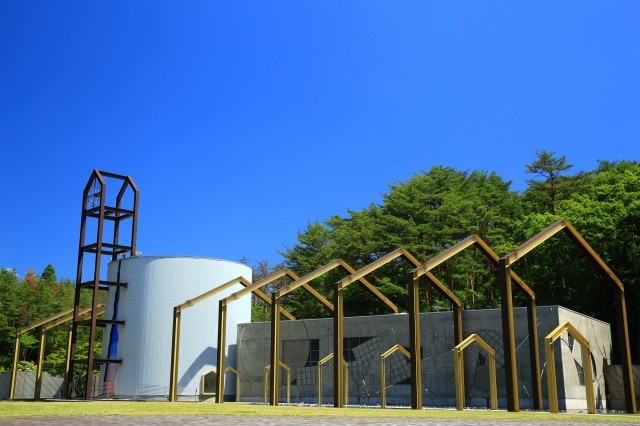
The Miyazawa Kenji Fairy Tale Village gives visitors the opportunity to enjoy hands-on learning about the fantasy worlds of Kenji Miyazawa. Pass through the Milky Way Station gate at the village entrance and step into the world of Kenji Miyazawa!
Kenji no Gakko (Kenji’s school) consists of five rooms, the Fantasy Hall, Uchu (universe), Tenku (sky), Daichi (earth) and Mizu (water). A particular highlight is the world of bugs and plants seen from an ant’s point of view of in the Daichi room.
Kenji no Kyoshitsu (Kenji’s classroom) is a row of log-houses with lovely motifs, each house presents a display of plants, animals, stars, birds and stones. A gift shop is also available.
The outdoor space represents some of the sources of his ideas. Enjoy a stroll along the Fukuro no Komichi (owl’s path), relax on one of the benches in the Yosei no Komichi (fairy’s path) and meditate on the surrounding wonders. Visitors can see the wild herbs that appeared in his fairy tales in the Sanyaso-en (wild herb garden).
The village is also fantastic when illuminated at night.
The venue is family friendly, children will particularly enjoy running around the vast grounds. Enjoy a family day out at the Miyazawa Kenji Fairy Tale Village!
Kenji no Gakko (Kenji’s school) consists of five rooms, the Fantasy Hall, Uchu (universe), Tenku (sky), Daichi (earth) and Mizu (water). A particular highlight is the world of bugs and plants seen from an ant’s point of view of in the Daichi room.
Kenji no Kyoshitsu (Kenji’s classroom) is a row of log-houses with lovely motifs, each house presents a display of plants, animals, stars, birds and stones. A gift shop is also available.
The outdoor space represents some of the sources of his ideas. Enjoy a stroll along the Fukuro no Komichi (owl’s path), relax on one of the benches in the Yosei no Komichi (fairy’s path) and meditate on the surrounding wonders. Visitors can see the wild herbs that appeared in his fairy tales in the Sanyaso-en (wild herb garden).
The village is also fantastic when illuminated at night.
The venue is family friendly, children will particularly enjoy running around the vast grounds. Enjoy a family day out at the Miyazawa Kenji Fairy Tale Village!
Miyazawa Kenji Memorial
Indulge yourself in the imaginary world of Kenji Miyazawa
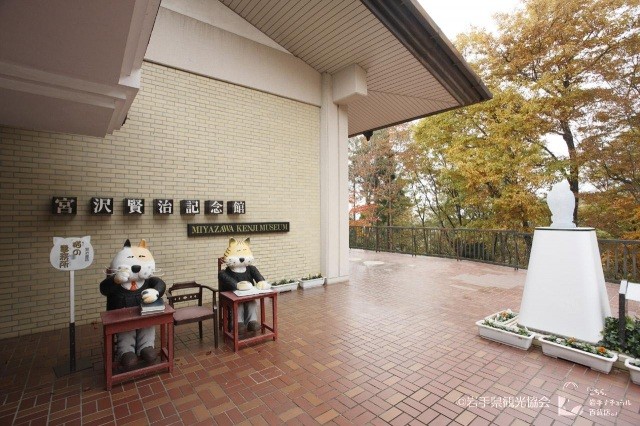
Kenji Miyazawa was a talented writer with accomplishments in a wide range of fields including poetry, literature, agriculture and science. The Miyazawa Kenji Memorial Museum is located at the top of Mount Koshio in his hometown of Hanamaki.
The museum is based on the subject areas of science, art, the universe, religion and agriculture and includes displays of both videos and documents. Visitors can catch a glimpse of the author’s personality though the displays of his personal belongings and manuscripts. The museum also outlines his creative process and the results of his scientific research all of which serves as an inspiration to all who visit! In addition to the museum café and gift shop, the lounge is the perfect place to relax and enjoy the panoramic view of the city of Hanamaki.
Miyazawa’s creativity is also on display in the south-facing flower garden and floral sundial reproduction based on his original design at Polan Square.
The Miyazawa Kenji Ihatov Centre and Miyazawa Kenji Fairy Tale Village are nearby. After exploring these museums, visitors come away with a deeper understanding of his imaginary worlds.
For particular fans a monument of Kenji Miyazawa can be found in the grounds of the former private institute of agriculture “Rasu Chijin Kyokai” founded by Kenji himself. Part of his famous poem “Amenimo Makezu” (strong in the rain) is inscribed on the monument by the acclaimed artist Kotaro Takamura.
The museum is based on the subject areas of science, art, the universe, religion and agriculture and includes displays of both videos and documents. Visitors can catch a glimpse of the author’s personality though the displays of his personal belongings and manuscripts. The museum also outlines his creative process and the results of his scientific research all of which serves as an inspiration to all who visit! In addition to the museum café and gift shop, the lounge is the perfect place to relax and enjoy the panoramic view of the city of Hanamaki.
Miyazawa’s creativity is also on display in the south-facing flower garden and floral sundial reproduction based on his original design at Polan Square.
The Miyazawa Kenji Ihatov Centre and Miyazawa Kenji Fairy Tale Village are nearby. After exploring these museums, visitors come away with a deeper understanding of his imaginary worlds.
For particular fans a monument of Kenji Miyazawa can be found in the grounds of the former private institute of agriculture “Rasu Chijin Kyokai” founded by Kenji himself. Part of his famous poem “Amenimo Makezu” (strong in the rain) is inscribed on the monument by the acclaimed artist Kotaro Takamura.
Hanamaki Onsenkyo
A variety of hot springs along a river surrounded by mountains
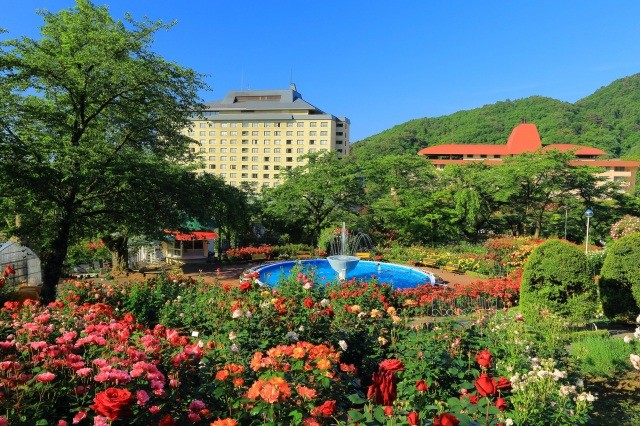
Hanamaki Onsenkyo consists of 12 hot springs allowing visitors to enjoy a variety of hot spring waters. From open-air baths facing mountain streams to hidden inns nestled along the river gorge, each hot spring has its own character and a range of accommodation options are available. Dai Onsen has a calm and nostalgic atmosphere, while Osawa Onsen has a rich history and open-air baths with breath-taking views. Onsen hopping is the perfect way to compare and find your favorite one!
Hanamaki is the hometown of Kenji Miyazawa, a great poet and writer of fairy tales and the town has a number of locations with connections to the author. The rose garden at Hanamaki Onsen fascinates visitors each season with its collection of over 450 types of roses in vast grounds of 16,500m2 and features a brilliant floral sundial designed by Miyazawa. Kamabuchi Waterfall along the Dai river appeared in one of his works and the surrounding trail is delightful to stroll around. Enjoy a leisurely walk just as Kenji did while listening to the murmuring streams!
The Miyazawa Kenji Memorial Museum and Miyazawa Kenji Fairy Tale Village are in the neighbourhood. There is also a museum dedicated to Kotaro Takamura, a renowned poet who loved Hanamaki.
Hanamaki Onsen is a one-hour drive from Chusonji Temple and Genbikei Gorge. Come and refresh yourself with a relaxing hot spring bath after a big day out!
A thematic journey in the Tohoku region:Hot springs
Hanamaki is the hometown of Kenji Miyazawa, a great poet and writer of fairy tales and the town has a number of locations with connections to the author. The rose garden at Hanamaki Onsen fascinates visitors each season with its collection of over 450 types of roses in vast grounds of 16,500m2 and features a brilliant floral sundial designed by Miyazawa. Kamabuchi Waterfall along the Dai river appeared in one of his works and the surrounding trail is delightful to stroll around. Enjoy a leisurely walk just as Kenji did while listening to the murmuring streams!
The Miyazawa Kenji Memorial Museum and Miyazawa Kenji Fairy Tale Village are in the neighbourhood. There is also a museum dedicated to Kotaro Takamura, a renowned poet who loved Hanamaki.
Hanamaki Onsen is a one-hour drive from Chusonji Temple and Genbikei Gorge. Come and refresh yourself with a relaxing hot spring bath after a big day out!
A thematic journey in the Tohoku region:Hot springs
Day2
Esashi-Fujiwara Heritage Park
Become part of the nobility of the Heian period at this huge historical theme park known as Michinoku Hollywood!
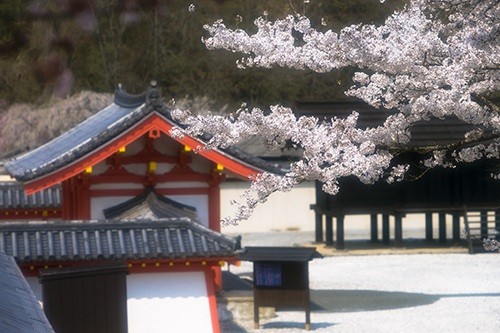
Across 20 hectares, the Esashi Fujiwara Heritage Park is lined with around 120 Heian-style buildings of different sizes, including the Kyaranogosho, a recreation of the shinden-zukuri buildings that were the residences of Heian aristocrats; the Tsunekiyo Hall and Kiyohira Hall, reproductions of samurai halls; and the Seicho, the government office that governed political affairs.
The buildings are faithfully reproduced based on research of the Heian Period (794-1185), making visitors feel as if they have stepped back in time and become Heian aristocrats.
This is the only Heian Period theme park in Japan. It is often used as a stage for filming movies and TV dramas, and has become known as "Michinoku Hollywood."
Visitors can enjoy various experiences such as dressing up in historical costumes and armor, archery and shell games.
Visitors can also enjoy taking photos at the popular house of tricks at Heian Hall (Trick Art Attraction) and stroll around the park using the Yokai (Ghost) Hunt AR app.
In spring and fall, special nighttime events include illuminations and projection mapping shows.
In late May, the wisteria trellis are in full bloom, and from mid-June to mid-July, viewing events for genji-botaru and heike-botaru fireflies are held.
Visitors can enjoy the atmosphere of each of the four seasons.
The buildings are faithfully reproduced based on research of the Heian Period (794-1185), making visitors feel as if they have stepped back in time and become Heian aristocrats.
This is the only Heian Period theme park in Japan. It is often used as a stage for filming movies and TV dramas, and has become known as "Michinoku Hollywood."
Visitors can enjoy various experiences such as dressing up in historical costumes and armor, archery and shell games.
Visitors can also enjoy taking photos at the popular house of tricks at Heian Hall (Trick Art Attraction) and stroll around the park using the Yokai (Ghost) Hunt AR app.
In spring and fall, special nighttime events include illuminations and projection mapping shows.
In late May, the wisteria trellis are in full bloom, and from mid-June to mid-July, viewing events for genji-botaru and heike-botaru fireflies are held.
Visitors can enjoy the atmosphere of each of the four seasons.
Chuson-ji Temple
A World Heritage temple complex featuring a dazzling golden hall

The "Cultural Heritage of Hiraizumi" was registered as a World Heritage Site in 2011. Chuson-ji Temple is famous for its gorgeous golden Konjikido (Konjikido), but there is much more to see, including Benkei-do, Yakushido, and the main hall!
Chuson-ji was founded in 850 by the great priest Jikaku Daishi Ennin, and in the early 12th century, Kiyohira, the first generation of the Oshu Fujiwara clan, began the construction of a large hall and pagoda. Kiyohira, who had lost his family in the war, is said to have expressed his wish for a peaceful ideal society based on the teachings of Buddha. Hiraizumi prospered as a gold-producing area, and Motohira the second, followed by Hidehira the third, flourished for nearly 100 years until Yasuhira the fourth was destroyed by the Minamoto clan. Konjikido, National Treasure No. 1, is the culmination of the craftsmanship of the time, including mother-of-pearl inlay, openwork carving, and lacquer maki-e. The "Sankozo" houses Buddhist statues and other valuable cultural assets. As a treasure house of Buddhist art representative of eastern Japan, the museum preserves the history and prosperity of the Oshu Fujiwara clan.
The temple is also attractive for its seasonal changes in appearance: cherry blossoms in spring, fresh greenery in summer, autumn leaves in fall, snow in winter, and the building and its natural surroundings.
Chuson-ji was founded in 850 by the great priest Jikaku Daishi Ennin, and in the early 12th century, Kiyohira, the first generation of the Oshu Fujiwara clan, began the construction of a large hall and pagoda. Kiyohira, who had lost his family in the war, is said to have expressed his wish for a peaceful ideal society based on the teachings of Buddha. Hiraizumi prospered as a gold-producing area, and Motohira the second, followed by Hidehira the third, flourished for nearly 100 years until Yasuhira the fourth was destroyed by the Minamoto clan. Konjikido, National Treasure No. 1, is the culmination of the craftsmanship of the time, including mother-of-pearl inlay, openwork carving, and lacquer maki-e. The "Sankozo" houses Buddhist statues and other valuable cultural assets. As a treasure house of Buddhist art representative of eastern Japan, the museum preserves the history and prosperity of the Oshu Fujiwara clan.
The temple is also attractive for its seasonal changes in appearance: cherry blossoms in spring, fresh greenery in summer, autumn leaves in fall, snow in winter, and the building and its natural surroundings.
Motsuji Temple
Free your mind in this temple’s peaceful garden known as Buddha’s Paradise
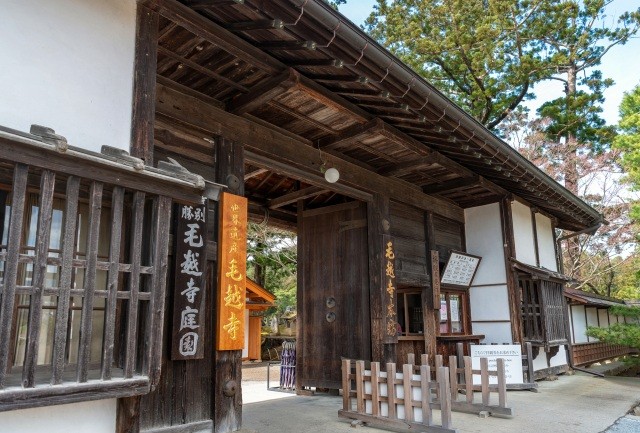
Motsuji Temple is a designated UNESCO World Cultural Heritage Site along with nearby Chusonji Temple in Hiraizumi. The beautiful Japanese garden and ancient religious buildings are officially recognised both as a historic site and as a place of exceptional scenic beauty.
The priest Ennin originally founded the temple and the construction of the temple complex was done during the 2nd and 3rd generations of Oshu Fujiwara clan.
The beautiful Japanese garden representing Buddha’s Paradise is breath-taking. Visitors can enjoy the Pure Land Garden, a popular garden style of the Heian period with its unique landscape design techniques, surrounding the central Oizumi-ga-ike pond.
The peaceful garden fascinates visitors with its beautiful seasonal flowers and is the perfect place to escape from the hustle and bustle of everyday life. Many people come here during the Iris Festival in early summer and the “Hagi” Japanese Bush Clover Festival in early autumn. For those wanting a deeper Buddhist experience, the temple offers Zen meditation sessions and Buddhist sutra transcription courses introducing participants to Japanese Buddhism.
Thanks to the flat nature of the location the temple is easily accessible. Lifts and accessible toilets are available in the temple buildings for the seniors and families with children.
A thematic journey in the Tohoku region:Okuno Hosomichi・The History of Michinoku
The priest Ennin originally founded the temple and the construction of the temple complex was done during the 2nd and 3rd generations of Oshu Fujiwara clan.
The beautiful Japanese garden representing Buddha’s Paradise is breath-taking. Visitors can enjoy the Pure Land Garden, a popular garden style of the Heian period with its unique landscape design techniques, surrounding the central Oizumi-ga-ike pond.
The peaceful garden fascinates visitors with its beautiful seasonal flowers and is the perfect place to escape from the hustle and bustle of everyday life. Many people come here during the Iris Festival in early summer and the “Hagi” Japanese Bush Clover Festival in early autumn. For those wanting a deeper Buddhist experience, the temple offers Zen meditation sessions and Buddhist sutra transcription courses introducing participants to Japanese Buddhism.
Thanks to the flat nature of the location the temple is easily accessible. Lifts and accessible toilets are available in the temple buildings for the seniors and families with children.
A thematic journey in the Tohoku region:Okuno Hosomichi・The History of Michinoku
Genbikei Gorge
Enjoy the scenic beauty of the gorge along with the local specialty “Flying Dango”!
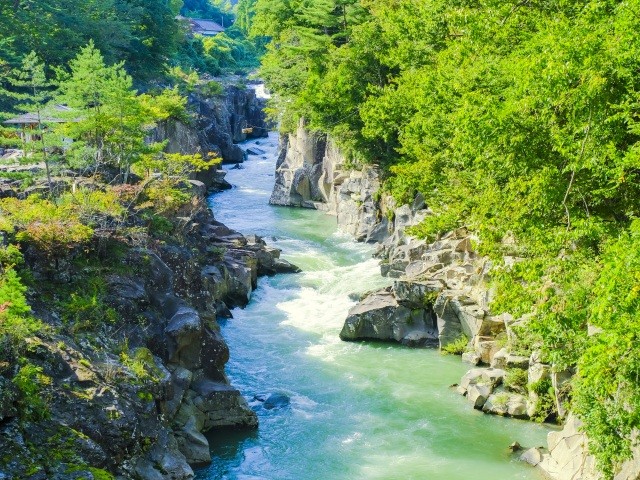
Genbikei Gorge is a beautiful 2km stretch of gorge along the Iwai River flowing from Mount Kurikoma. Visitors can enjoy the dynamic views of the waterfalls and unique rock formations created by the river’s erosion as they stroll along the riverside.
A 30-minute walking path along the slowly flowing river gives visitors a sense of the tranquil scenery of the emerald green water and its murmuring streams. While the 70-minute walking path around the rough rapids of the upper stream provides views of uniquely shaped ruts formed by pebbles whirling around in the turbulent flow of water.
Along with the breath-taking views, many people come to the gorge for the local specialty of Genbikei, the popular Flying “Kakko Dango” (sweet sticky rice balls). There is a gazebo along the gorge where visitors can place an order via a hanging basket from a quaint shop on the other side of the gorge. Place your money in the basket hanging from the cable and knock the board with the wooden hammer provided to let the shop know an order is on its way. The shop staff then pulls the basket across the gorge and send it flying back to you with a box of Dango and a cup of green tea. Be sure to have your camera ready to catch this unique experience of the Flying Dango on its zip-wire!
There is a roadside station with restaurant facilities nearby and the walking trails are well-managed with resting places along the way for the best views of the gorge. Our recommendation is to combine your visit to Genbikei with a trip to the other famous gorge nearby, Geibikei, and compare their beauty!
A thematic journey in the Tohoku region:Riverside
A 30-minute walking path along the slowly flowing river gives visitors a sense of the tranquil scenery of the emerald green water and its murmuring streams. While the 70-minute walking path around the rough rapids of the upper stream provides views of uniquely shaped ruts formed by pebbles whirling around in the turbulent flow of water.
Along with the breath-taking views, many people come to the gorge for the local specialty of Genbikei, the popular Flying “Kakko Dango” (sweet sticky rice balls). There is a gazebo along the gorge where visitors can place an order via a hanging basket from a quaint shop on the other side of the gorge. Place your money in the basket hanging from the cable and knock the board with the wooden hammer provided to let the shop know an order is on its way. The shop staff then pulls the basket across the gorge and send it flying back to you with a box of Dango and a cup of green tea. Be sure to have your camera ready to catch this unique experience of the Flying Dango on its zip-wire!
There is a roadside station with restaurant facilities nearby and the walking trails are well-managed with resting places along the way for the best views of the gorge. Our recommendation is to combine your visit to Genbikei with a trip to the other famous gorge nearby, Geibikei, and compare their beauty!
A thematic journey in the Tohoku region:Riverside
Hanamaki Onsenkyo
A variety of hot springs along a river surrounded by mountains

Hanamaki Onsenkyo consists of 12 hot springs allowing visitors to enjoy a variety of hot spring waters. From open-air baths facing mountain streams to hidden inns nestled along the river gorge, each hot spring has its own character and a range of accommodation options are available. Dai Onsen has a calm and nostalgic atmosphere, while Osawa Onsen has a rich history and open-air baths with breath-taking views. Onsen hopping is the perfect way to compare and find your favorite one!
Hanamaki is the hometown of Kenji Miyazawa, a great poet and writer of fairy tales and the town has a number of locations with connections to the author. The rose garden at Hanamaki Onsen fascinates visitors each season with its collection of over 450 types of roses in vast grounds of 16,500m2 and features a brilliant floral sundial designed by Miyazawa. Kamabuchi Waterfall along the Dai river appeared in one of his works and the surrounding trail is delightful to stroll around. Enjoy a leisurely walk just as Kenji did while listening to the murmuring streams!
The Miyazawa Kenji Memorial Museum and Miyazawa Kenji Fairy Tale Village are in the neighbourhood. There is also a museum dedicated to Kotaro Takamura, a renowned poet who loved Hanamaki.
Hanamaki Onsen is a one-hour drive from Chusonji Temple and Genbikei Gorge. Come and refresh yourself with a relaxing hot spring bath after a big day out!
A thematic journey in the Tohoku region:Hot springs
Hanamaki is the hometown of Kenji Miyazawa, a great poet and writer of fairy tales and the town has a number of locations with connections to the author. The rose garden at Hanamaki Onsen fascinates visitors each season with its collection of over 450 types of roses in vast grounds of 16,500m2 and features a brilliant floral sundial designed by Miyazawa. Kamabuchi Waterfall along the Dai river appeared in one of his works and the surrounding trail is delightful to stroll around. Enjoy a leisurely walk just as Kenji did while listening to the murmuring streams!
The Miyazawa Kenji Memorial Museum and Miyazawa Kenji Fairy Tale Village are in the neighbourhood. There is also a museum dedicated to Kotaro Takamura, a renowned poet who loved Hanamaki.
Hanamaki Onsen is a one-hour drive from Chusonji Temple and Genbikei Gorge. Come and refresh yourself with a relaxing hot spring bath after a big day out!
A thematic journey in the Tohoku region:Hot springs
Day3
Fish for Kappa at the Kappa Fuchi
Bring your kappa-catching permit to Kappa Fuchi!
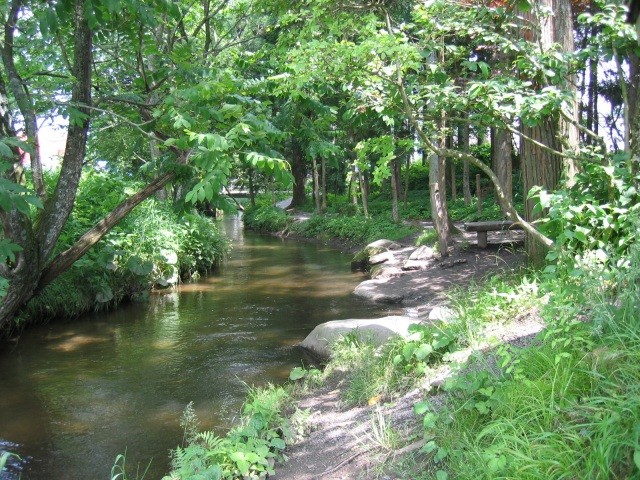
One of the most famous tourist attractions in Tono, Iwate Prefecture, is Kappa Fuchi. It is where many kappa (a Japanese mythological river monster) are said to have lived, startling and playing tricks on people. There are many other stories about kappa, but the kappa of Tono are said to have red faces, unusually large mouths, and a voice like that of a bird. At Kappa Fuchi, thick bushes cover the clear flowing water, making it seem as if a kappa could appear at any time. Purchase a kappa-catching permit at the nearby Densyoen tourist information center and use cucumber as bait to fish for the legendary kappa.
Get a kappa-capturing permit, a popular item from Tono.◆◇◆ If you capture a kappa and deliver it to the Tono Tourism Association... you will receive 10 million yen in prize money! ◆◇◆ Follow the 7 provisions for kappa-catching (posted on the back of the permit) and enjoy fishing for kappa! You can get a permit with your photo (requires yearly renewal).It is very a very popular purchase; many famous people have one, too! Although, previously, it was only available for purchase for visitors to Tono, due to its popularity, they are now also sold online (Purchases are limited to 10 per person). On the back of the card are 7 provisions on catching kappa and the precautions to take!
Get a kappa-capturing permit, a popular item from Tono.◆◇◆ If you capture a kappa and deliver it to the Tono Tourism Association... you will receive 10 million yen in prize money! ◆◇◆ Follow the 7 provisions for kappa-catching (posted on the back of the permit) and enjoy fishing for kappa! You can get a permit with your photo (requires yearly renewal).It is very a very popular purchase; many famous people have one, too! Although, previously, it was only available for purchase for visitors to Tono, due to its popularity, they are now also sold online (Purchases are limited to 10 per person). On the back of the card are 7 provisions on catching kappa and the precautions to take!
GOAL
